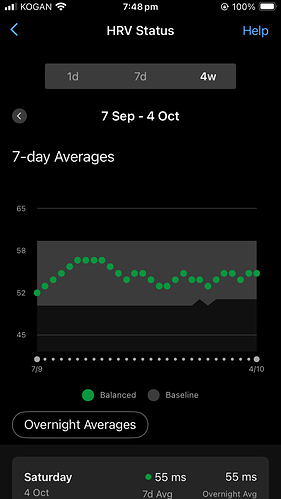I’ll just leave this here since there’s not much traffic on the forums anymore.
What are some good resources on heart rate variability?
Early last month, when I got my FitBit Sense2 watch, all I knew was that “variability is good.” But that’s got to be a silly way to look at it. Too simple. For the first time, I’ve been able to measure it and track changes. I just don’t know what’s a good range for “good” versus “uh oh.” The watch simply tells me my HRV (currently says 113 milliseconds) but I recall one day it said it was too high while never saying it’s too little variability.
I’m 71, currently in weight maintenance, switching my exercise patterns to put less time on “cardio” and more on muscle building.

